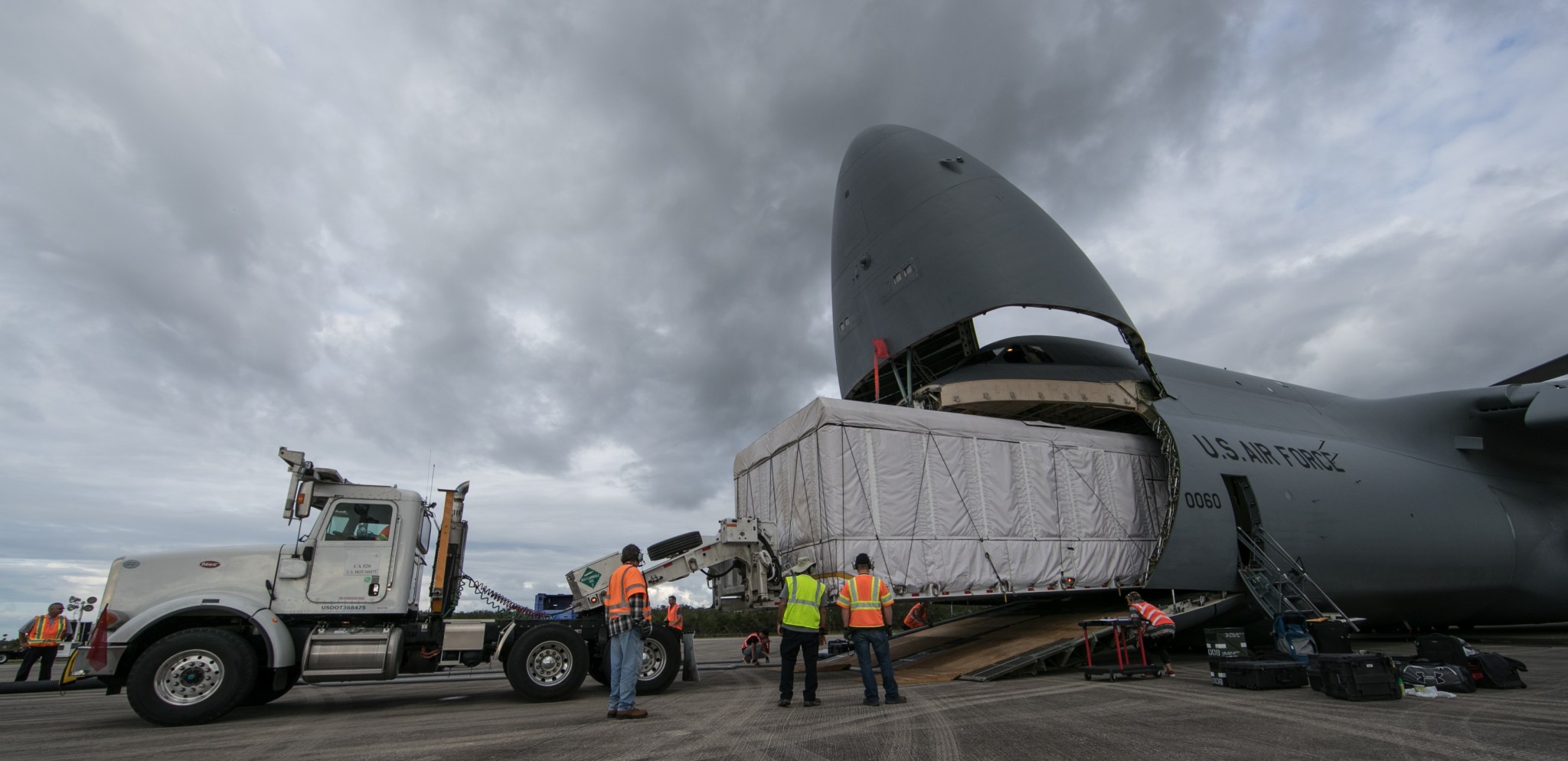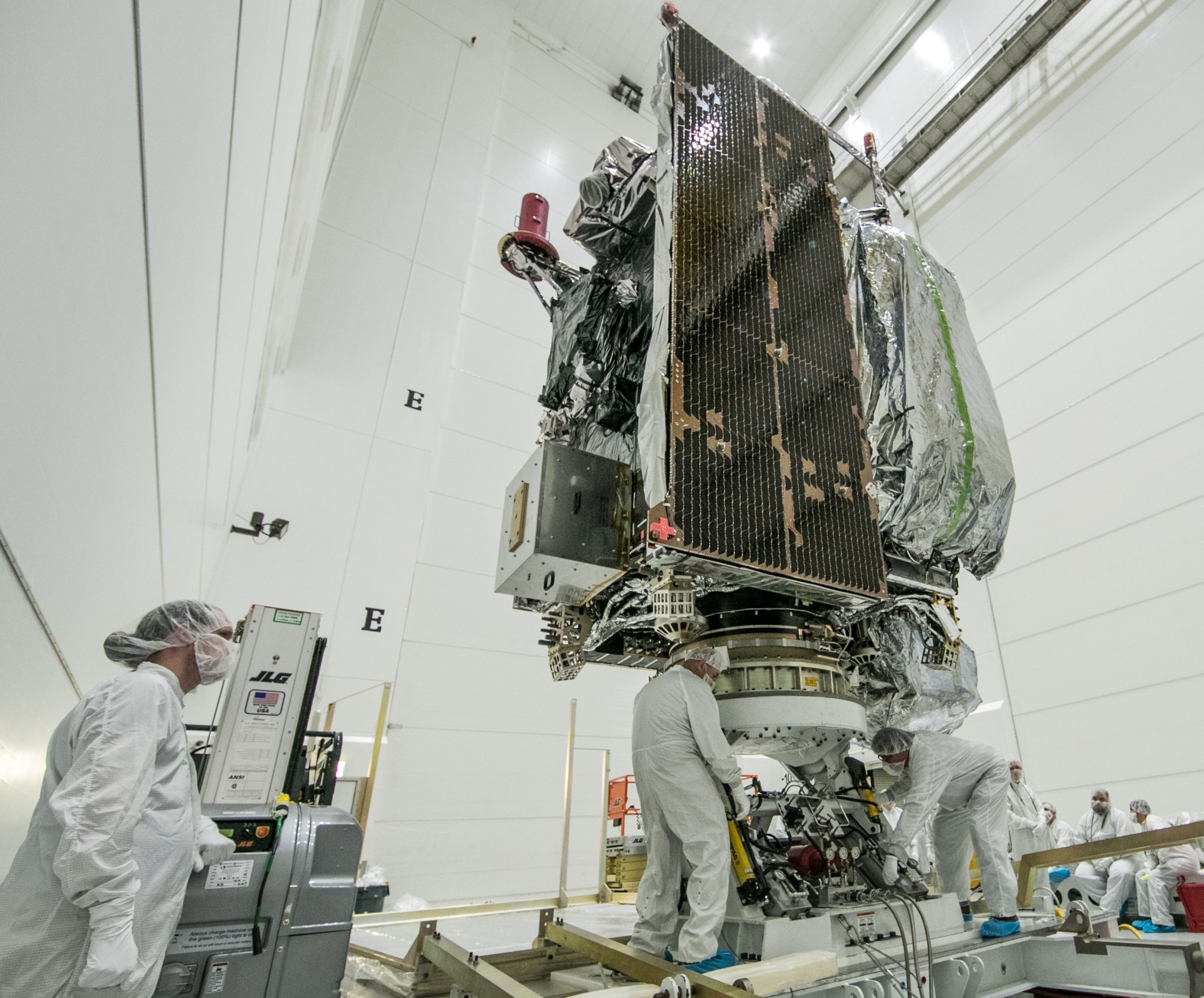NOAA’s GOES-S satellite arrived safely at NASA’s Kennedy Space Center Shuttle Landing Facility, Florida, to prepare for its launch planned for March 1, 2018. GOES-S was shipped from Lockheed Martin Space Systems, Littleton, Colorado, on Dec. 4 aboard a U.S. Air Force C-5M Super Galaxy cargo transport.
After its arrival, the GOES-S spacecraft was pulled from its shipping container, and is now undergoing additional testing and preparation for encapsulation on top of the rocket that will take it to its geostationary orbit more than 22,000 miles above Earth.
“This is a major milestone for the GOES-S team. GOES-16, its sister satellite, is about to become operational and is proving to be a game-changer for weather forecasting and environmental hazard assessment,” said Tim Walsh, acting system program director for the GOES-R Series Program at NASA’s Goddard Space Flight Center in Greenbelt, Maryland. “We are excited to get GOES-S into orbit and extend the area covered by this revolutionary new technology.”
GOES-S is scheduled to launch aboard an Atlas V 541 rocket from Cape Canaveral Air Force Station in Florida. GOES-S will weigh over 11,000 pounds at launch.
GOES-S is the second satellite in NOAA’s Geostationary Operational Environmental Satellites (GOES) – R Series, which includes GOES-R, GOES-S, GOES-T and GOES-U. GOES satellites are designated with a letter prior to launch and a number once they achieve geostationary orbit. GOES-R, the first satellite in the series, launched in November 2016 and is now GOES-16. GOES-16 will take its place as NOAA’s GOES-East satellite later this month, keeping an eye on the continental United States and the Atlantic Ocean.
GOES-S will be designated GOES-17 upon reaching geostationary orbit. After a period of on-orbit test and checkout, GOES-17 will be operational as GOES-West, providing coverage of the western U.S., Alaska, Hawaii and the Pacific Ocean. An operational GOES-17 will give the Western Hemisphere two next-generation geostationary environmental satellites. Together, GOES-16 and GOES-17 will observe Earth from the west coast of Africa all the way to Guam.
Like the other satellites in the series, GOES-S carries a suite of sophisticated Earth-sensing, lightning-detecting, solar imaging and space weather monitoring instruments. The advanced technology on board GOES-S will provide critical data and imagery in near-real time on severe weather events such as thunderstorms, tornadoes, hurricanes and flash floods, as well as hazards like fog, aerosols, dust storms, volcanic eruptions and forest fires.
The GOES-R Series is a collaborative acquisition and development effort between NOAA and NASA to develop, launch and operate the satellites. NOAA manages the GOES satellites while NASA oversees the acquisition of the spacecraft and instruments in addition to the management of the launch service through NASA’s Launch Services Program based at the agency’s Kennedy Space Center in Florida.
For more information about the GOES-R Series of satellites, visit:
John Leslie
NOAA, Silver Spring, Md.
John.leslie@noaa.gov
301-713-0214
Rob Gutro
NASA’s Goddard Space Flight Center, Greenbelt, Md.
Robert.j.gutro@nasa.gov
301-286-4044
Tori McLendon
NASA’s Kennedy Space Center, Florida
tori.n.mclendon@nasa.gov
321-867-9165





























